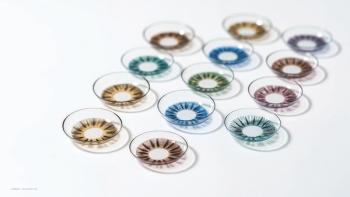
Laser capsulotomy yields predictability
An investigational femtosecond laser-assisted cataract surgery system for capsulotomy creation was evaluated in a randomized, fellow eye control study.
Results of a fellow-eye comparative study show the benefit of an investigational femtosecond laser-assisted cataract surgery system (Catalys Precision Laser System, OptiMedica) for significantly improving the reproducibility of capsulotomy size and shape when compared with capsulorhexis performed manually by experienced surgeons.
"Considering the importance of a perfectly sized and located capsulorhexis for maximizing our ability to predict effective lens position and IOL power, the findings of this study have potential implications for achieving better visual outcomes and happier patients," said Dr Stephen S. Lane, during the 2010 annual meeting of the American Academy of Ophthalmology.
The study evaluating use of the investigational platform for performing capsulotomy included 29 patients who had one eye randomly assigned to laser capsulotomy and the other eye to the manual technique. Eyes randomly assigned to laser capsulotomy also underwent lens fragmentation using the femtosecond laser with optical coherence tomography guidance prior to phaco.
Dr Lane presented a video of the laser capsulotomy procedure demonstrating how, with simple balanced salt solution irrigation, the excised disc was easily detached from the surrounding capsule. The excised discs were stained with trypan blue and subjected to image analysis to determine both diameter and shape in terms of circularity.
In addition, centration of the laser capsulotomy relative to the dilated pupil centre was measured in a still frame captured from a high-resolution nearinfrared video that is part of the femtosecond laser platform.
Statistically significant differences were achieved that favoured the laser capsulotomy procedure over the manual controls in analyses of mean deviation from intended capsulotomy size (27 ± 25 μm versus 339 ± 248 μm, respectively) and capsulotomy shape (0.942 ± –0.040 versus 0.765 ± 0.148, respectively, where 1 = a perfect circle). The laser-created capsulotomies also demonstrated excellent centration, with the average root square decentration from the dilated pupil centre being 86 ± 51 μm.
Dr Lane also observed that with the availability of femtosecond lasers to create predictable capsulotomies, surgeons are now equipped with a tool for determining the ideal position for capsulorhexis.
"However, it remains to be determined if the parameters for capsulorhexis creation should differ depending on certain variables, such as IOL type or lens capsule volume," he concluded.
Dr Stephen S. Lane is adjunct clinical professor of ophthalmology, University of Minnesota, and medical director at Associated Eye Care, Minneapolis, Minnesota, USA. He can be contacted by E-mail:
Dr Lane is a consultant to OptiMedica.
Newsletter
Get the essential updates shaping the future of pharma manufacturing and compliance—subscribe today to Pharmaceutical Technology and never miss a breakthrough.
















































